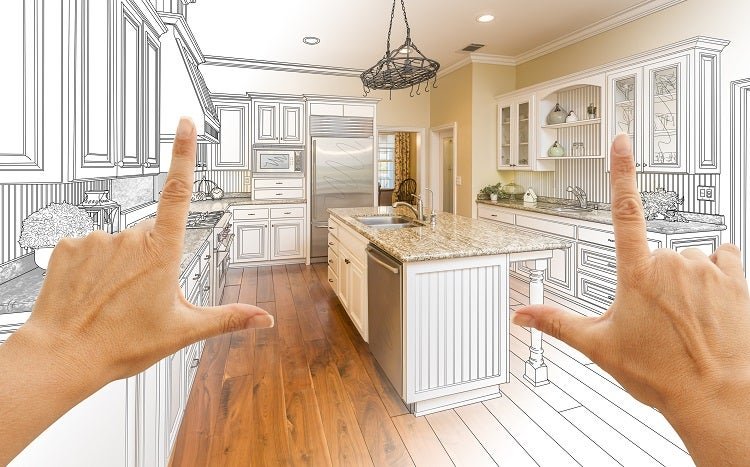1. Know what you’re getting into before you buy. Take a good look at the house and read any inspection reports you receive as part of the sale. Find out whether problems with the house are structural or cosmetic. Will you need to move or repair walls, or just paint them? Are the plumbing and electrical systems modern and in good condition?
If this is a home where you have been for some time, you may want to hire a home inspector to help look for major problems before you undertake to renovate. It could keep you from having to do a job twice.
2. Get organized. Tour your house with a clipboard or notebook and list all the changes you would like to make. Keep all your contacts, ideas, minutes of your meetings, and copies of architectural drawings and prices filed together. Always ask for copies of anything, even work schedules, and keep it filled. Even if you don’t read all these, it will keep everyone you deal with on their toes.
- Make a pencil sketch of your ideas. It need not be architectural quality or to scale. It can also be what you have saved from the internet or collected from magazines. This is for your bases of discussion with your architect and contractor, if you have them.
3. Decide how much you are willing to do yourself and what will need the help of a contractor. You’ll probably choose to do some of each. There is generally no need to hire a contractor to install a towel rod, but you may prefer not to install your own shingles on a steep, second-story roof.
4. Plan your budget. It is likely that buying the house and necessary things to go in it will leave you low on cash for some time after you buy
5. Decide where you will live while you renovate. Will you be able to live in the house, or part of it, while you renovate, or will you need to live elsewhere? Could you camp in the living room while the bedroom still smells of fresh paint and carpet?
6. Plan your approach. While some parts of home remodeling and home renovation can happen at any time, some activities depend on other activities to happen first.
- Identify and address anything that’s urgent. Look for immediate safety hazards, such as a broken window. Also look for problems that will cause further damage if not addressed, such as a leaky roof.
- Know what depends on other projects.
- Tackle major repairs first. It doesn’t make a lot of sense to paint a wall you plan to tear down.
- Or, start with small projects. If you’re planning to do a lot of work yourself and just getting started with home repairs, smaller projects can give you experience and confidence. Small projects can also help you accomplish larger ones or make a space usable until you can do something more involved. Smaller or interim repairs may even be all you can afford at first.
- Try to do related projects together. For example, if you have removed carpeting or other flooring, take the opportunity to repair squeaks, water damage, and any other flaws or damage to the sub-floor.
7. Do a little at a time. For long projects that encompass the entire house, such as painting or replacing all the doors (or all the doorknobs), see if it makes sense to go one room or area at a time. This approach will also help you to spread your expenses over time.
8. Do a major project all at once. If you are without the use of your only bathroom during a remodel, or if you simply want something out of the way, you may wish to undertake a larger renovate project all at once.

